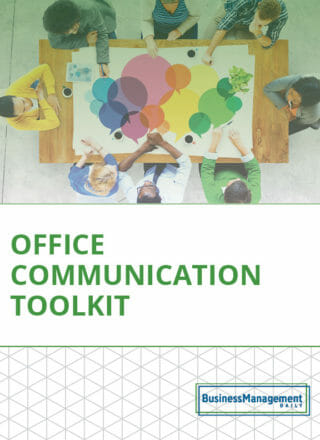6 steps for setting up an in-house dispute resolution system
 Think about creating a program to help settle employee conflicts in-house. An alternative dispute-resolution program lets you identify and address problems while they’re still manageable and before they land in court. Here’s a six-step process for establishing an ADR program:
Think about creating a program to help settle employee conflicts in-house. An alternative dispute-resolution program lets you identify and address problems while they’re still manageable and before they land in court. Here’s a six-step process for establishing an ADR program:
1. Assess organizational readiness. Is a dispute-resolution program compatible with the organization’s goals? If not, this will be a tough sell.
2. Identify major stakeholders. Are key decision-makers on board with creating a dispute-resolution program? Identify these key allies early and enlist their support.
Seek input from informal leaders who have influence over others. It’s important to cultivate leaders who are vested in your organization’s established practices and, therefore, will likely resist. Diverse supporters will strengthen the program.
3. Do your homework. Research the types of dispute-resolution programs (see box at right), and determine which closely support your organization’s vision. Consider questions like:
- Will you include peer review in your appeal process?
- Will you offer outside mediation?
- If you offer arbitration, will it be binding on the organization? Will it be binding on the employee? In many states, arbitration must be binding on both parties.
4. Design your program. To determine which components will work for your company, create a cross-functional team from HR, line management and senior management. This team will look at your program from various perspectives and will help to ensure that it is effective.
5. Seek feedback. Once you have an initial design, seek feedback through employee roundtables, leadership team meetings, exit interviews, suggestion boxes and email or telephone surveys. The more you share about your design, the better your feedback. It’s vital for end users to provide ideas and raise concerns.
6. Design your rollout strategy and communication plan. Decide whether to run a pilot program in certain departments or go for an organization-wide launch.
Regardless of the scope of your ADR program, communication will be key to its effectiveness. Make sure all affected employees learn about the program in a consistent fashion with a consistent message. To do so, conduct HR and manager briefings before the official program launch. Then explain the program through correspondence from your CEO, fliers, posters, brochures sent home, articles in company newsletters, email blasts and targeted Q&A sessions.
Whatever formats you choose, reintroduce your program on an annual basis. Keep your message fresh; highlight a different component of the program in a quarterly newsletter, internal blog or series of emails.
Alternative dispute resolution
Alternative dispute resolution is a catchall term for procedures designed to settle legal disputes without going to court. There are three main kinds of ADR:
1. Arbitration: An impartial arbitrator decides a final and binding resolution.
2. Peer review: A panel of co-workers trained in ADR techniques discusses the problem and suggests solutions.
3. Mediation: Disputes are submitted to a neutral mediator for nonbinding resolution. The mediator’s goal is to move the two parties closer together and work toward a resolution.
Your attorney can help you determine which approach will work best, and set up the necessary legal processes.




